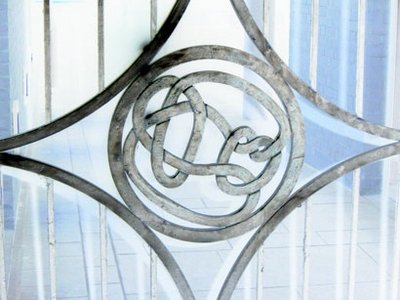Ukraine Canada Summer School 2006 Talk I: Difference between revisions
From Drorbn
Jump to navigationJump to search
No edit summary |
No edit summary |
||
| Line 5: | Line 5: | ||
* Is the {{KAT Link|3_1|trefoil knot}} really knotted? |
* Is the {{KAT Link|3_1|trefoil knot}} really knotted? |
||
* Is the trefoil knot equivalent to its mirror image? |
* Is the trefoil knot equivalent to its mirror image? |
||
* Are {{KAT Link| |
* Are {{KAT Link|K11n34|K11n34}} (the "Conway" knot) and {{KAT Link|K11n42|K11n42}} (the "Kinoshita-Terasaka" knot) really different? |
||
{| align=center |
{| align=center |
||
|- |
|- |
||
Latest revision as of 12:47, 5 December 2007
Also see Some Non Obvious Examples.
Questions
- Is the trefoil knot really knotted?
- Is the trefoil knot equivalent to its mirror image?
- Are K11n34 (the "Conway" knot) and K11n42 (the "Kinoshita-Terasaka" knot) really different?

|

|
- Which of these two is the knot at the gate of the Cambridge University maths department?

|
- Can you make a list of all knots?
- The trefoil knot is bounds a Seifert surface. Do all knots do?
- The complement of the trefoil knot is "fibered" with Seifert surfaces (see animation). Is that true for all knots? How does one decide?
- Which knots are ribbon knots?
- Which knots are slice knots?
- And always, the hardest and most important question in mathematics: Why should we care??
Some Answers
- 3-colourings.
- The Kauffman bracket and the Jones polynomial.